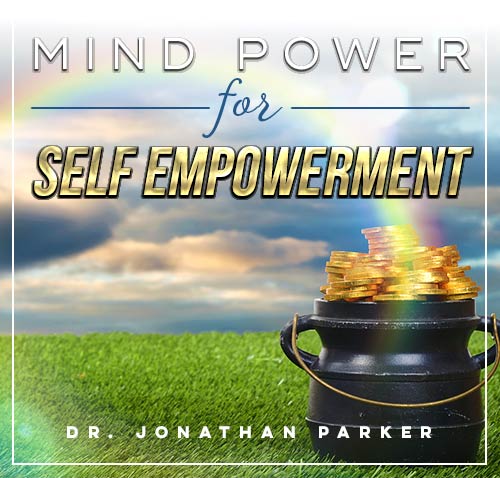What Is Post-Pandemic Stress Disorder and How Can It Be Managed

Before diving in, please note: This post is for informational purposes only. If you’d like to know more about how we approach topics, feel free to check out our friendly Disclaimer Page.
Hey there, amazing readers! 🖐️ Just a quick note: yes, we know there are a lot of ads here. Trust us, we get it—it’s not the prettiest look, but they help us keep this blog alive and kicking. Those pesky little ads cover the costs of all the behind-the-scenes magic, from hosting and tech stuff to creating content we hope you’ll love.
We’re committed to delivering quality posts, and your support (even just sticking around despite the ads) means everything to us. So, bear with us, and thanks for helping us keep the good vibes rolling. Now, on to the fun stuff! 😉
TRANSLATE BUTTON AT THE END OF THE ARTICLE
The term “post-pandemic stress disorder” refers to a mental health issue that manifests itself in a person after a pandemic has come to an end.
Symptoms of post-pandemic stress disorder, which are comparable to those of post-traumatic stress disorder, often start to manifest themselves when the rates of infection and transmission begin to decline.
People suffering from severe symptoms of post-pandemic stress disorder may have the perception that the risk of infection is just as great as it was before, despite the fact that the likelihood of being infected by the disease has significantly decreased, particularly since the introduction of vaccines that appear to be effective in combating it.
Despite this, the likelihood of getting sick from the condition is much lower now than it was before.
Consequently, it may be considerably more challenging for them to restart a regular, post-pandemic lifestyle as compared to people who are free from any combination of incapacitating symptoms linked with the condition.
This is because of the fact that they have been afflicted by the disorder.
The Following Are Four Symptoms Of Post-Pandemic Stress Disorder
Before being able to treat it correctly, you must first be able to appropriately identify it, just as you would need to be able to do for any other form of health-related issue.
When taking a more in-depth look at some of the most noticeable symptoms of post-pandemic stress disorder, one must take into consideration the following four categories of symptoms:
1. Repetitive Reminiscences
People who have bothersome memories associated with a pandemic may often have unwelcome and upsetting recollections of either having personally contracted the illness or seeing the pandemic’s effects on others.
These memories can be caused by the pandemic itself or by witnessing the effects of the disease on others.
Intrusive memories associated with a pandemic can also lead to both recurring nightmares that are frequently vivid as well as flashbacks in which a person may experience pandemic-related trauma as if it were happening all over again, despite the fact that the disease may no longer pose the same level of threat.
2. Avoidance
Even after the underlying illness has been successfully controlled, a person who is experiencing avoidance symptoms linked with post-pandemic stress disorder may persist in making every attempt to avoid the persons, situations, and objects that remind them of the pandemic.
This might include avoiding circumstances in which they were exposed to the pandemic.
For example, going to the hospital or attending a social gathering may be avoided because they remind them of the pandemic.
In addition to this, they could completely avoid socializing with other people out of worry that they might get accidentally infected by other people.
Because of this, the symptoms of avoidance may result in both social isolation and financial strain.
As a direct consequence of this, a person who is dealing with post-pandemic stress disorder is at a much increased risk of having emotions of both anxiety and sadness.
3. Unfavorable Shifts In One’s Way Of Thinking
Changes in one’s way of thinking may be brought about by prolonged exposure to the stress that is associated with a pandemic.
A person who is suffering from post-pandemic stress disorder could feel as if their sense of personal security has been destroyed as a result of the advent of the pandemic since there does not seem to be any way to evade the reach of the underlying sickness.
They may no longer have a sense of security because they are unable to establish a safe haven in which to hide from the looming and menacing risk of infection.
As a consequence of this, individuals could have a very difficult time accepting the fact that the pandemic has been controlled, which might result in emotions of paranoia, despondency, and emotional distancing from other people.
4. Variations In The Outcome Of Physical Reactions
People who are experiencing the bodily symptoms linked with post-pandemic stress disorder may say that they are easily startled and have a heightened awareness of their surroundings.
As a consequence of this, individuals may have trouble going to sleep and focusing, which, in the long run, causes them to experience emotions of impatience and rage.
It’s possible that they’ll have a substantial deficiency in both energy and concentration, which makes it extremely difficult for them to complete one of a variety of essential tasks that need to be done every day, such as finishing projects for work or school, getting regular exercise, or even maintaining proper personal hygiene.
Because they are physically exhausted, they are likely to feel emotionally exhausted as well.
The physiological manifestations of post-pandemic stress disorder have been linked to an increased risk of a number of health problems, including those that are related to obesity and impaired circulation.
Here Are Five Suggestions That Will Help You Deal With Post-Pandemic Stress Disorder
Nonetheless, there is cause for optimism!
If you are unfortunate enough to be suffering from any combination of the symptoms of post-pandemic stress disorder described above, there is good news: you do not have to spend the rest of your life in constant dread of something terrible about to happen.
Bear in mind that even though it may seem as if there is no way out of the storm, every cloud has a silver lining.
Despite the fact that you can get the impression that there is no way to escape the storm.
You may find the following list of very straightforward approaches useful in coping with some of the more challenging signs and symptoms of post-pandemic stress disorder (PPSD).
1. Attend a Peer Support Group
You are never really alone, even though you often get the impression that you are.
If you are reading this page, it is quite probable that you have experienced a pandemic at some point in your life, regardless of whether you are now exhibiting any signs of post-pandemic stress disorder or not.
Joining forces with those who have been through something similar to what you have been through could be the greatest thing for you to do right now.
Even though attending a support group is not precisely the same as engaging in professional therapy, it does provide the individual who is participating in the group both a sense of belonging and an avenue through which they are able to discuss some of their most private emotions in a safe setting.
Participating in a support group may be particularly useful for someone who has avoided connecting with other people in order to reduce their risk of being contaminated.
2. Seek The Advice Of Mental Health Professional
The journey through life is fraught with many highs and lows, difficulties and tests, and even some traps along the road.
Although having a loving family and close friends to turn to for support may be of immense assistance, the amount of support that they can collectively provide may be instinctually restricted because of their excessive worry about the way that you are experiencing it.
On the other hand, the assistance of a therapist who has received enough training may guide you through some of the most difficult periods of your life from a viewpoint that is more neutral and objective.
According to a number of studies, cognitive-behavioral therapy, often known as CBT, is one of the most successful types of psychotherapy for patients suffering from post-pandemic stress disorder.
In essence, it investigates the link between destructive thinking habits and undesirable patterns of action.
Through the use of an effective strategy to challenge cognitive distortions, it is possible to build emotional control and, as a result, reduce symptoms of both anxiety and depression.
3. Medication Administration
Psychiatric drugs have been shown to considerably lessen a diverse range of symptoms associated with mental diseases, ranging from schizophrenia to bipolar disorder.
Anti-anxiety medications, or anxiolytics, may be helpful in reducing anxiety feelings brought on by the worry that one may already be afflicted with a disease or that one may pass it on to another person when it comes to treating symptoms of post-pandemic stress disorder.
In addition, antidepressant medications can assist in the reduction of depressive feelings that may be brought on by the loss of a loved one as a result of the pandemic, the sense of responsibility that comes with having lived through the pandemic whereas others have not, and the prolonged isolation from one’s own relatives and close friends.
Even while there is a possibility that a pandemic has been effectively limited, there is still a possibility that some individuals may continue to feel that the situation is just as hazardous as it was before, despite the fact that the statistics may say otherwise.
Because they target the region of the brain that is involved in reasoning and perception, antipsychotic drugs may be able to assist in the reduction of delusional thinking.
4. Incorporate Meditation Into Your Daily Routine
You may not have to go very far if you are looking for some much-needed tranquility to assist you in your efforts to manage the despair and worry that are linked with post-pandemic stress disorder.
It’s possible that you won’t even have to leave the house.
Research has revealed that practicing meditation may greatly lessen the negative effects of post-pandemic stress disorder.
The experience of stress is a natural and inevitable component of everyday life, and its origins might lie in a wide variety of sources.
To be able to have an emotionally healthy life, one of the most important skills to possess is the ability to properly deal with adversity.
You may get a stronger feeling of inner calm via the practice of meditation at any time and in any location.
Even if you just give it a few minutes of your time each day, the practice of meditation may assist you in emotionally distancing yourself from a wide variety of harmful, unpleasant, and unproductive ideas.
To get started, all you need to do is locate a place that is both secure and peaceful, such as in your living room, on your patio, or maybe even in your garden.
Position yourself in a relaxed sitting position on the ground with your back in a straight line, your legs crossed, and your arms resting comfortably on each of your legs with your palms facing heaven.
The next step is to shut your eyes and take several slow, deep breaths.
Prepare yourself to let go of any emotional poison that may have been clouding your tranquility and open up your mind to new possibilities.
5. Engage In Regular Exercise
Even though you may be experiencing nightmares and flashbacks because of the horrific experiences you went through during the pandemic, it is recommended that you establish a regular fitness regimen after talking with your primary care physician.
According to research, engaging in physical exercise causes the production of endorphins in the brain.
These endorphins are said to increase one’s capacity to sleep and, as a result, lessen feelings of tension and worry.
In addition, doing a cardiovascular activity on a consistent basis, such as walking, swimming, or riding a bicycle, boosts the circulation of blood that is rich in nutrients throughout the body.
When your body is well, your mind is healthy, and as a result, your capacity to properly manage any unpleasant symptoms of post-pandemic stress disorder increases along with it.
The Important Thing Is To Proceed In Baby Steps
There are moments when you have no choice but to confront your anxieties head-on and just go for it.
However, rather than simply attempting to go out the door as quickly as possible to reconnect with people, it’s possible that you need to take some baby steps toward emotionally healing yourself first.
As was the case with COVID-19, prior to the onset of the illness, the majority of people had absolutely no idea of the potential danger posed by a virus carried by bats and much less of a grasp of what it would take to keep the virus under control.
By the time the pandemic had run its course, it was abundantly evident that practically every person living on planet Earth had been affected by the sickness in some manner, shape, or form.
There was no way out of it, and there was nowhere to hide.
Even if the illness has not been completely eliminated, it does seem to have been effectively confined by the implementation of quarantines and social distance, the use of face masks, regular hand washing, and, finally, the advent of effective vaccinations.
Despite this, people who are facing the symptoms of post-pandemic stress disorder may continue to have a very difficult time moving ahead emotionally, despite the fact that the illness may seem to have been effectively controlled.
This is because of the impact that the pandemic had on them.
A Few Parting Thoughts
Even if you have a strong mental makeup and have overcome a great deal of adversity in your own life, prolonged periods of darkness and the threat of a viral pandemic may take their toll on anyone’s mental health.
In spite of the fact that social isolation and quarantines may be of great assistance in putting a stop to the spread of a disease, it would appear that these preventative measures may also have a number of unfavorable side effects that may contribute to the development of difficulties that are more complex on their own, including emotional paralysis, despair, and anxiety.
Those who are struggling with the symptoms of post-pandemic stress disorder might take heart in the fact that there is hope.
There is a wide array of therapy options available that may be of assistance.
The first and most important step in treating any mental health illness is to recognize that you have a problem.
After that, you’ll be able to start taking care of it, maybe by using any combination of the tactics that are outlined in this e-book.

The Enlightenment Journey is a remarkable collection of writings authored by a distinguished group of experts in the fields of spirituality, new age, and esoteric knowledge.
This anthology features a diverse assembly of well-experienced authors who bring their profound insights and credible perspectives to the forefront.
Each contributor possesses a wealth of knowledge and wisdom, making them authorities in their respective domains.
Together, they offer readers a transformative journey into the realms of spiritual growth, self-discovery, and esoteric enlightenment.
The Enlightenment Journey is a testament to the collective expertise of these luminaries, providing readers with a rich tapestry of ideas and information to illuminate their spiritual path.
Our Diverse Expertise 🌟
While our primary focus is on spirituality and esotericism, we are equally passionate about exploring a wide range of other topics and niches 🌍📚. Our experienced team is dedicated to delivering high-quality, informative content across various subjects ✨.
To ensure we provide the most accurate and valuable insights, we collaborate with trusted experts in their respective domains 🧑🏫👩🏫. This allows us to offer well-rounded perspectives and knowledge to our readers.
Our blog originally focused on spirituality and metaphysics, but we’ve since expanded to cover a wide range of niches. Don’t worry—we continue to publish a lot of articles on spirituality! Frequently visit our blog to explore our diverse content and stay tuned for more insightful reads.






